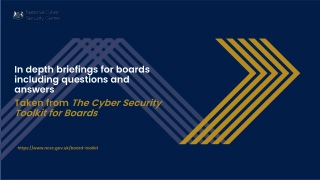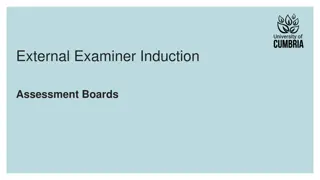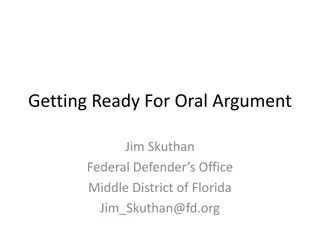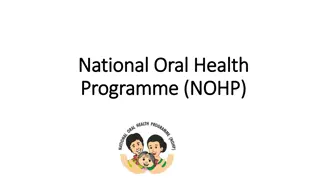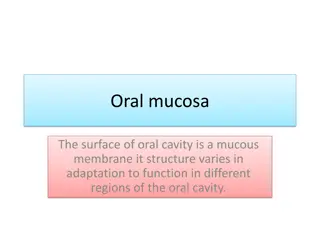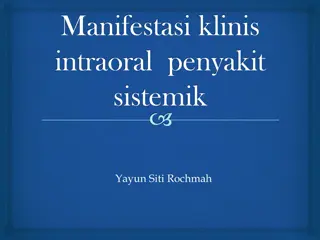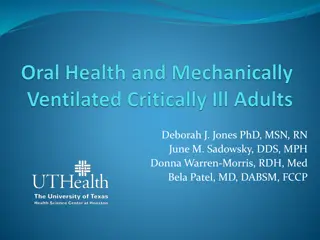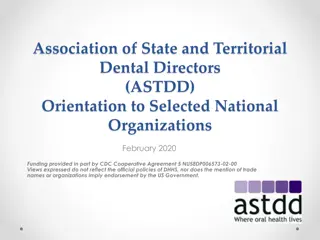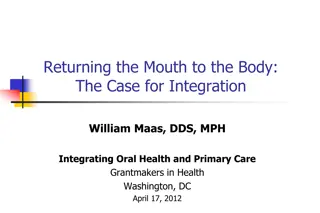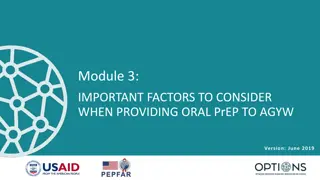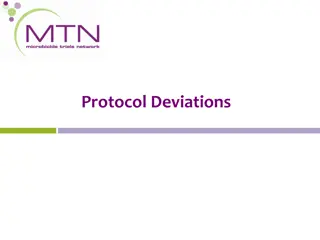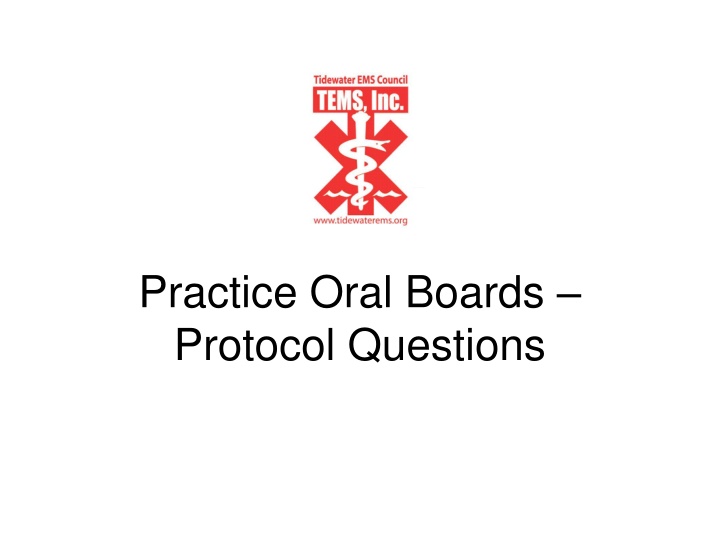
Practice Oral Boards Protocol Questions
Comprehensive practice questions for oral boards focusing on cardiac arrest, medication administration, and hemodynamic instability. Includes guidelines on airway management, endotracheal administration, medication dosing, and patient assessment in critical situations. Ideal resource for medical professionals preparing for exams.
Download Presentation

Please find below an Image/Link to download the presentation.
The content on the website is provided AS IS for your information and personal use only. It may not be sold, licensed, or shared on other websites without obtaining consent from the author. If you encounter any issues during the download, it is possible that the publisher has removed the file from their server.
You are allowed to download the files provided on this website for personal or commercial use, subject to the condition that they are used lawfully. All files are the property of their respective owners.
The content on the website is provided AS IS for your information and personal use only. It may not be sold, licensed, or shared on other websites without obtaining consent from the author.
E N D
Presentation Transcript
Practice Oral Boards Protocol Questions
What to Expect at Oral Boards Materials You will be provided with: Pad of paper to take notes (you may not take your notes with you) ECG Rhythm packet You don t need to bring anything other than perhaps a writing utensil 6/22/2023 2
For cardiac arrests, how do you decide which is the priority regarding airway management and vascular access/medication administration? If BLS airway is adequate, priority is vascular access and medication administration; ALS airway should be secured when adequate resources available 6/22/2023 3
When should endotracheal administration of medications be used? ONLY when IV/IO access is not available 6/22/2023 4
What medications can be administered via the endotracheal route? Lidocaine Epinephrine Atropine Narcan 6/22/2023 5
If medications must be administered via the endotracheal route, what changes need to be made to the dose? 2-2.5 times IV dose 6/22/2023 6
What medications should be administered specifically for cardiac arrest in renal patients? What is the dose? Calcium Chloride 1 g IV/IO over 3 minutes Sodium Bicarbonate 1 mEq/kg IV/IO Follow each with a 40 mL flush 6/22/2023 7
What should you do if PETCO2 is <10 mmHg during CPR? Improve chest compressions with proper rate, depth, recoil, and eliminate pauses 6/22/2023 8
What signs and symptoms make a patient hemodynamically unstable? Acute change in mental status Hypotension Ongoing chest pain and/or breathing difficulty 6/22/2023 9
Why would you use transcutaneous pacing? Describe the directions for using transcutaneous pacing. Signs and symptoms of inadequate cerebral or cardiac perfusion (chest pain, hypotension, pulmonary edema, altered mental status) Rate 60 bpm for an Adult and 100 beats per minute for a child Slowly increase output from 0 mA until capture, then increase mA by 10% Consider the use of sedation or analgesia for patient if time and condition permits 6/22/2023 10
Identify this rhythm. How are you going to treat this rhythm if the patient is stable? Unstable? Sinus tachycardia treat underlying cause (e.g., hypovolemia, hypoxia, fever, pain, anxiety, medications) 6/22/2023 11
What is the treatment for stable SVT? Vagal maneuvers 6 mg Adenosine 12 mg Adenosine 6/22/2023 12
What is the treatment for stable Atrial Fibrillation/Flutter at a rate of >150? Contact Medical Control Transport 6/22/2023 13
What is the treatment for stable ventricular tachycardia at a rate >150? 6 mg Adenosine if unable to determine rhythm etiology (VT vs. aberrant SVT) and rhythm is regular and monomorphic Amiodarone 150 mg in 100 mL over 10 minutes 6/22/2023 14
What is the treatment for polymorphic ventricular tachycardia/torsades at a rate >150? Stable? Unstable? Stable 2 g Mag. Sulfate over 5 minutes Unstable Attempt synchronized cardioversion at the highest energy setting (per pt) once. Polymorphic VT can deteriorate quickly to VF If unable to sync or cardioversion is ineffective, defibrillate at the highest energy setting and contact medical control. 6/22/2023 15
What do you do when you achieve ROSC? If systolic BP <90 250 mL bolus NS up to 1000 mL if lung sounds clear Epi drip 2-10 mcg/min 12 lead ECG For recurrent VF/pulseless VT, medical control may order an Amiodarone drip 6/22/2023 16
When is a needle decompression indicated? Standing or physician orders? Tension pneumothorax with serious signs and symptoms Hypotension, clinical signs of shock, and at least one of the following: JVD, Trach deviation (late sign), Increased resistance when ventilating the patient Adult Standing orders for I and P Pediatric Standing orders for P Physician orders for I 6/22/2023 17
What would you consider for post-intubation sedation? Standing order or physician order? Versed 2.5 mg IV Adult Standing orders for I and P Pediatric Standing orders for P Physician orders for I 6/22/2023 18
What are the signs or symptoms that differentiate an allergic reaction from anaphylaxis? Respiratory distress and signs/symptoms of hemodynamic instability (hypotension, altered mental status, ongoing chest pain or breathing difficulty) 6/22/2023 19
What is the treatment for allergic reaction? Standing or physician orders? 50 mg Benadryl IV/IM Adult Standing orders Pediatric Physician orders for A/I Standing orders for P 6/22/2023 20
What is the treatment for anaphylaxis? Epinephrine 1mg/ml, 0.01 mg/kg IM, max dose 0.5 mg Albuterol 2.5 mg HHN Fluid bolus if signs of hypoperfusion Benadryl 50 mg IV/IM EKG Monitor, consider 12 lead and transmit if available Solu-Medrol 125 mg IV 6/22/2023 21
What might medical control order for severe anaphylaxis with hypotension and/or imminent cardiac arrest? Epinephrine 0.1mg/ml, IV/IO over 5 minutes 0.1 mg/10 ml titrated to effect Standing order in adults Do not give for pediatrics 6/22/2023 22
Once the patient is on CPAP, can you remove the mask to administer nitroglycerin? Yes It is acceptable to briefly remove the CPAP mask to administer nitroglycerin Provider shall administer a minimum of 1 sublingual nitroglycerin prior to application of CPAP for CHF 6/22/2023 23
When should Lasix be given to a person suspected of a CHF exacerbation Lasix may not be appropriate; consult Medical Control PO for I and P Lasix may not be appropriate in patients with renal disease Lasix is used for patients in fluid overload. Not all patients with CHF exacerbation are in fluid overload. It may be a fluid distribution problem. 6/22/2023 24
When can you start with an Albuterol/Atrovent as first-line treatment for asthma/COPD? Severe distress Those who have not responded to home therapy 6/22/2023 25
How many times can Atrovent be administered under standing orders? Once 6/22/2023 26
What medications might you consider for severe asthma? Standing orders or physician orders? Magnesium sulfate Adult 2 g over 5 minutes standing orders Pediatric 50 mg/kg physician orders Epinephrine 1mg/ml, 0.01 mg/kg IM, max dose 0.5 mg Physician orders For pediatrics - Solumedrol 2mg/kg, max dose 125 mg Physician orders 6/22/2023 27
When should you consider CPAP for asthma? Standing or physician orders? When the patient is in severe distress not responsive to nebulizers and intubation is being considered note that CPAP may worsen hypotension Standing orders 6/22/2023 28
What is the treatment for CHF? CPAP with PEEP 5-15 or aggressive airway management if in severe respiratory distress EKG monitor and 12 lead Nitroglycerin 0.4 mg SL up to 3 doses if BP >90 1 inch nitroglycerin paste along with SL nitroglycerin when using CPAP Consider Versed 1mg for sedation to assist CPAP Consider Albuterol 2.5mg HHN if wheezing present Lasix 40 mg IV Physician order for I and P 6/22/2023 29
Since both cause wheezing, how can you differentiate CHF from COPD? Capnography Patient may require treatment using both pathways with capnography 6/22/2023 30
What is the management for burns? Stop the burning process Consider oral endotracheal intubation if impending airway obstruction is suspected due to inhalation injury Cover with dry sterile sheet or dressing Vascular access Consider 20ml/kg IV bolus up to 1L in severe burns Pain Management Morphine 5 mg IV/IO/IM, may be repeated up to 10 mg (adult), 0.1 mg/kg IV to max dose, may repeat once (peds) Fentanyl 50 mcg IV/IO/IM/IN over 2 min. May repeat once up to max of 100 mcg (adult), 1mcg/kg IN to max dose, may repeat once (peds) If no airway compromise, Ketamine, 0.5 mg/kg IN or 0.25 mg/kg IV in adults only Zofran, if needed, 4 mg over 2-5 min IV or IM if IV unavailable (adult), 0.15 mg/kg to max dose (peds) 6/22/2023 31
Do you still need to administer aspirin to your chest pain patient if they ve taken 81 mg within 1 day? Yes Administer additional aspirin up to the maximum protocol-directed dose (324 mg) 6/22/2023 32
When should you not administer aspirin? History of GI bleeding or other bleeding disorders History of recent surgery (within 14 days) Already taken maximum dose Sensitivity/allergy to aspirin 6/22/2023 33
When should you contact medical control prior to administration of aspirin? Patient is on anticoagulant therapy Heparin Lovenox Coumadin/warfarin Effient Plavix Pradaxa Xarelto You can administer aspirin if patient is taking anti platelet 6/22/2023 34
What does the blood pressure have to be to administer nitroglycerin with an IV? Without an IV? With an IV: >90 mmHg systolic Without an IV: >110 mmHg systolic 6/22/2023 35
What is the morphine dose for Chest Pain/AMI/ACS? 2 mg Morphine IV/IO/IM, may be repeated up to 10 mg 6/22/2023 36
What are the signs and symptoms of a dystonic reaction? What is the treatment? Abnormal muscle tone, sudden stiffening, turning head to one side Benadryl 50 mg IV/IM 6/22/2023 37
When is Haldol contraindicated? Patients with a seizure history Haldol lowers the seizure threshold 6/22/2023 38
What is the protocol for chemical restraint? Standing or physician orders? Severely Agitated? Versed 5 mg IM Haldol 5 mg IM Apply physical restraints, provide cooling as needed Not Severely Agitated? Versed 2.5 mg IN/IM (may repeat every 5 mins to a max of 10mg) Consider Haldol 2.5 mg IM if needed Standing orders 6/22/2023 39
What is the management of hypoglycemia? Pediatric hypoglycemia? Glucometry <70 mg/dl Adult Dextrose 10%, 12.5 g (125ml) IV Repeat with additional 12.5 g (125 ml) after 2 minutes if glucometry still <70 mg/dl Glucagon 1 mg IM if IV cannot be established Pediatric Dextrose 10%, see chart in protocols Preemie/Newborn (up to 4kg) 2 mL/kg IV 6kg-25kg weight, 5 mL/kg IV Greater than 25 kg, adult dosing Glucagon 1 mg IM if IV cannot be established 6/22/2023 40
What is the management of hyperglycemia? At what glucose level do you have to manage hyperglycemia? 250 mL NS bolus, may repeat up to 1000 mL if lung sounds remain clear Glucose >500 6/22/2023 41
When should Zofran be administered? What is the dose? When vomiting could produce an airway obstruction (e.g., backboarded patients) or for patient comfort when the patient is repeatedly vomiting 4 mg slow IV push (over 2-5 minutes) or IM, may repeat after 10 minutes Pediatric 0.15 mg/kg up to 4 mg Consult medical control before administering to pregnant patient Use caution when administering with Amiodarone or Haldol due to an increased risk of arrhythmias from prolonged Q-T intervals 6/22/2023 42
What are signs and symptoms of pre- eclampsia? Systolic blood pressure >140 and/or diastolic >80 General edema, particularly in upper extremities or face Frontal headaches Vision disturbances Altered mental status Abdominal pain 6/22/2023 43
What are signs and symptoms of eclampsia? What is the management? Signs and symptoms of pre-eclampsia with seizures Provide Treatment per A/O/V Protocol Magnesium sulfate 4 g in 100 mL NS over 5 minutes If seizures persist, exit to Seizure protocol Versed 2.5 mg slow IV push over 1 min, may repeat once for continuing seizure 6/22/2023 44
Pain management: What does the blood pressure and pain scale have to be? For what conditions do you have standing orders in adults? Peds? Blood pressure >90 and no signs of hypoperfusion. Pain >5 on a 10 scale Standing orders for all ages: Isolated extremity injury Burns Kidney stones Cancer Sickle cell crisis Standing orders for Patients 15 years and older: Significant trauma Abdominal pain Do not implement pain management protocol to treat headaches/migraines Implement nausea/vomiting protocol as needed 6/22/2023 45
Pain management: What are the medications indicated for pain management? Dosing? Standing orders or physician orders? Morphine Adult 5 mg IV/IO/IM, may be repeated up to 10 mg Pediatric 0.1 mg/kg IV/IO/IM up to max of 5 mg, may repeat once after 10 minutes Fentanyl Adult - 50 mcg IV/IO/IM/IN over 2 min, may be repeated once up to max of 100 mcg Pediatric 1mcg/kg IN to a max single dose of 50mcg, may be repeated once. IV Fentanyl is NOT recommended for pediatric patients Ketamine Adult 0.5 mg/kg IN OR 0.25 mg/kg IV up to max dose of 25 mg Pediatric Ketamine is NOT indicated for patients under 15 years Do not administer opioids and ketamine to the same patient Standing orders for I/P 6/22/2023 46
What is sepsis? Sepsis is a severe life-threatening organ dysfunction caused by a dysregulated host response to infection manifested by a constellation of clinical signs and symptoms 6/22/2023 47
What are the SIRS (Systemic Inflammatory Response Syndrome) symptoms? SBP < 90 mmHg Heart rate >90/min Respiratory rate >20 Altered mental status Temperature >100.4 F or <96.0 F 6/22/2023 48
Why should you monitor ETCO2 levels in patients with Sepsis? Decreased ETC02 levels are linked to elevated serum lactate and are a good indicator of metabolic acidosis 6/22/2023 49
When would you consider Vasopressors (Epinephrine and Norepinephrine)? Dose? Vasogenic and cardiogenic shock Epinephrine 0.1 mg IV/IO over 5 minutes (Push-pressor) Norepinephrine 2-12 mcg/min IV/IO, titrate to maintain systolic BP of 90 mmHg Administer AFTER 250 mL boluses up to 1000 mL if lung sounds remain clear 6/22/2023 50

